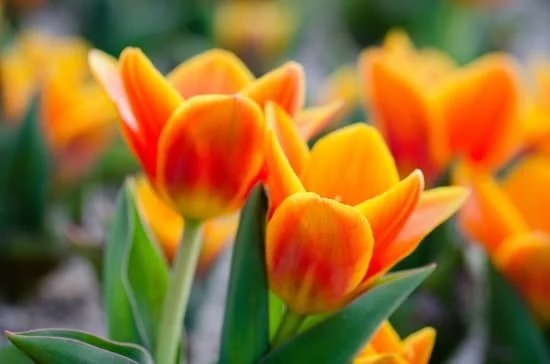Are you an urban dweller with limited outdoor space or a beginner looking to try your hand at vegetable gardening? Look no further than container vegetable gardening. In this article, we will explore various ideas for container vegetable gardening and provide tips for a successful and bountiful harvest. Whether you have a small patio, balcony, or even just a sunny windowsill, container vegetable gardening is a practical and rewarding option for growing your own fresh produce.
Container vegetable gardening offers numerous benefits for both novice and experienced gardeners. From the ability to grow in limited space to the flexibility of moving plants around for optimal sunlight and temperature, there are plenty of advantages to this method of gardening. Additionally, container vegetable gardens can be an attractive addition to any outdoor living space, adding both beauty and functionality.
In the following sections, we will delve into the essentials of container vegetable gardening, including choosing the right containers, selecting suitable vegetables for growth in containers, essential tips for success, creative ideas for vertical gardening, maintenance and care advice, as well as tips on harvesting and enjoying the fruits of your labor.
Whether you’re new to gardening or simply looking for fresh inspiration, this article will guide you through everything you need to know about thriving in the world of container vegetable gardening.
Benefits of Container Vegetable Gardening
Container vegetable gardening offers numerous benefits for those with limited outdoor space or for those who prefer the convenience and flexibility that comes with growing vegetables in containers. The practice involves cultivating vegetables in pots, hanging baskets, window boxes, or other types of containers instead of planting them directly into the ground. One major advantage of container gardening is that it allows you to grow your own produce even if you have a small yard, concrete patio, or balcony.
Another benefit of container vegetable gardening is the ability to control the soil quality and drainage more easily than traditional in-ground gardening. This means that you can create optimal growing conditions for your vegetables by selecting the right type of soil and ensuring proper drainage within your chosen containers. Additionally, container gardening can help reduce the risk of certain pests and diseases that may be present in garden soil, resulting in healthier plants.
Furthermore, container vegetable gardening provides greater flexibility when it comes to sunlight exposure and temperature control. Containers can be moved around as needed to take advantage of the best sun exposure for your vegetables, leading to increased harvests throughout the growing season.
This mobility also enables gardeners to protect their plants from extreme weather conditions such as frost or heat waves. Overall, container vegetable gardening offers a convenient and versatile option for cultivating fresh produce in a variety of living spaces.
| Benefit | Description |
|---|---|
| Space-saving | Allows cultivation without traditional garden plots |
| Control over soil quality | Enables optimal growing conditions for vegetables |
| Flexibility in sunlight exposure | Mobility allows adjustment for best sun exposure |
Choosing the Right Containers for Your Vegetable Garden
When it comes to container vegetable gardening, choosing the right containers is crucial for the success of your garden. The type and size of containers you use can impact the growth and yield of your vegetables. Here are some things to consider when selecting containers for your vegetable garden:
– Material: Consider the material of the containers, such as terracotta, plastic, wood, or fabric. Each material has its own pros and cons in terms of durability, water retention, and insulation.
– Size: The size of the container is important as it determines the amount of soil available for your vegetables to grow. Some vegetables require deeper containers for their root system to thrive.
– Drainage: Good drainage is essential for container vegetable gardening to prevent waterlogged soil which can lead to root rot. Look for containers with drainage holes or consider drilling them yourself.
– Mobility: If you plan on moving your containers around to chase sunlight or protect them from harsh weather conditions, consider using lightweight or portable containers.
Once you have considered these factors, you can start setting up your container vegetable garden with the most suitable containers based on your needs and preferences.
In addition to traditional pots and planters, there are many creative ideas for container vegetable gardening that can add visual interest and maximize space. Some popular options include:
1. Hanging baskets: Ideal for growing vine vegetables like tomatoes, cucumbers, or even strawberries.
2. Vertical towers: These space-saving structures allow you to grow multiple plants in a small footprint.
3. Repurposed items: Upcycle old buckets, crates, or even plastic bottles into unique planters.
By thinking outside the box and exploring these creative ideas for container vegetable gardening, you can create a visually appealing and productive garden regardless of limited space.
Selecting the Best Vegetables for Container Gardening
When it comes to container vegetable gardening, not all vegetables are suitable for growing in pots. It is important to choose the right vegetables that can thrive in a confined space and provide a bountiful harvest.
Some of the best vegetables for container gardening include tomatoes, peppers, lettuce, spinach, radishes, carrots, and herbs such as basil, oregano, and thyme. These vegetables and herbs do well in containers and can be grown successfully on a patio, balcony, or any small outdoor space.
Tomatoes are one of the most popular choices for container gardening due to their versatility and high yield. There are many varieties of tomatoes that are specifically bred for container growing, making them an ideal option for limited spaces. Peppers are also well-suited for containers and come in various colors and spice levels. Lettuce and spinach are fast-growing leafy greens that can be continuously harvested throughout the growing season, making them perfect for small-space gardening.
In addition to these traditional container vegetables, there are also dwarf or compact varieties of other vegetables such as eggplant, zucchini, and cucumbers that are well-adapted to container gardening. These compact varieties take up less space while still producing a good crop. When selecting vegetables for your container garden, consider the mature size of the plant as well as its growth habits to ensure success in your small-space garden.
| Vegetable | Container Size |
|---|---|
| Tomatoes | 5 gallons or larger |
| Peppers | 3 gallons or larger |
| Lettuce/Spinach | 6-8 inches deep |
| Carrots/Radishes | 12 inches deep |
| Basil/Oregano/Thyme | 6-8 inches deep per plant |
Essential Tips for Successful Container Vegetable Gardening
Container vegetable gardening is a great way to enjoy homegrown produce even if you have limited space. To ensure a successful container garden, there are essential tips that every gardener should keep in mind.
Choose the Right Location
The first step to successful container vegetable gardening is to choose the right location for your containers. Most vegetables need at least 6-8 hours of sunlight per day, so it’s important to place your containers in a sunny spot. Additionally, make sure that the location is easily accessible for watering and maintenance.
Use Quality Soil and Drainage
The soil you use for your container vegetable garden is crucial for the success of your plants. Use high-quality potting soil that is well-draining and nutrient-rich. Good drainage is also essential to prevent waterlogged roots, so make sure your containers have adequate drainage holes at the bottom.
Proper Watering and Fertilizing
Consistent watering is essential for container vegetable gardening, as pots tend to dry out more quickly than ground soil. Check the moisture level of the soil regularly and water as needed. Additionally, fertilize your plants regularly with a balanced fertilizer to ensure they have all the nutrients they need to thrive.
By following these essential tips for successful container vegetable gardening, you can create a thriving mini-garden in even the smallest of spaces. With proper care and attention, you’ll be enjoying a bountiful harvest of fresh vegetables right from your own patio or balcony in no time.
Creative Ideas for Vertical Container Gardening
Vertical container gardening is not only a great space-saving technique but also an innovative way to grow vegetables in small or limited spaces. With the right planning and execution, vertical gardening can yield a bountiful harvest while adding visual interest to your outdoor or indoor space. Here are some creative ideas for implementing vertical container vegetable gardening:
- Stacked Planter Boxes: Utilize the vertical space by stacking planter boxes on top of each other. This is perfect for growing herbs, lettuces, and small vegetables such as cherry tomatoes and peppers.
- Hanging Baskets: Hang baskets from a trellis, fence, or railing to grow trailing plants such as strawberries, peas, and cucumbers. This not only maximizes space but also adds a beautiful cascading effect to your garden.
- Vertical Wall Planters: Install wall-mounted planters or a living wall system to create a green wall of herbs, greens, and compact vegetables. This not only serves as a functional garden but also acts as an attractive decorative element.
These creative ideas for vertical container gardening demonstrate how you can make the most out of limited space while reaping the benefits of home-grown vegetables.
Remember to consider factors such as sunlight exposure, watering needs, and weight capacity when implementing these ideas for container vegetable gardening. With proper planning and maintenance, you can enjoy a flourishing vertical vegetable garden in even the smallest of spaces with these innovative techniques.
Maintenance and Care for Container Vegetable Gardens
Maintaining and caring for your container vegetable garden is essential to ensure a bountiful harvest of fresh, healthy produce. Just like traditional gardening, container gardening requires regular attention and care to thrive. From watering and fertilizing to pest control and pruning, there are several key aspects to consider when maintaining your container vegetable garden.
Watering and Fertilizing
Proper watering is crucial for the success of your container vegetable garden. Ensure that your containers have drainage holes to prevent waterlogged soil, which can lead to root rot. Water your plants regularly, especially during hot weather, but be mindful not to overwater. Additionally, fertilize your container vegetables with a balanced fertilizer according to the specific needs of each plant. This will help provide essential nutrients for healthy growth and high yields.
Pest Control
Pests can be a significant threat to container vegetable gardens, so it’s important to monitor your plants regularly for any signs of pest infestation. To minimize the risk of pests, keep the area around your containers clean and free from debris where pests may hide. Consider using natural pest control methods such as companion planting or introducing beneficial insects like ladybugs or praying mantises.
Pruning and Training
Regular pruning and training of your container vegetable plants can promote better airflow and health by preventing overcrowding and disease. Remove any dead or yellowing leaves, as well as any overcrowded or damaged stems. Additionally, some vining vegetables like tomatoes or cucumbers may benefit from being trained onto trellises or stakes to help them grow upright and save space.
By implementing these maintenance and care practices in your container vegetable garden, you can ensure that your plants remain healthy and productive throughout the growing season. With proper attention and care, you’ll be rewarded with a plentiful harvest of delicious homegrown vegetables right at your fingertips.
Harvesting and Enjoying the Fruits of Your Container Garden
In conclusion, container vegetable gardening offers a wealth of benefits and opportunities for anyone looking to enjoy the rewards of growing their own produce. From the flexibility and versatility that comes with using containers, to the ability to grow a wide variety of vegetables in limited spaces, this form of gardening is truly rewarding.
The creative ideas for vertical container gardening adds an extra layer of excitement and aesthetic appeal to the process, making it an enjoyable experience for gardeners of all levels.
As you begin harvesting the fruits of your container garden, you’ll be able to appreciate the hard work and dedication that went into nurturing your plants from seedlings to fully grown vegetables. Whether you’ve chosen to grow tomatoes, peppers, herbs, or leafy greens, there’s no denying the satisfaction that comes with reaping what you’ve sown.
In addition to enjoying fresh produce at home, sharing your bounty with friends and family can also bring joy and fulfillment as you showcase the results of your container vegetable gardening efforts.
While container vegetable gardening does require maintenance and care throughout the growing season, witnessing the progress and eventual success of your plants makes it all worth it. From regular watering and fertilizing to monitoring for pests and diseases, taking good care of your container garden ensures a bountiful harvest. With the right knowledge, tools, and resources at your disposal, anyone can enjoy a successful container vegetable garden filled with delicious homegrown produce.
Frequently Asked Questions
What Vegetables Grow Well Together in a Container?
Some vegetables that grow well together in a container include tomatoes, basil, and peppers. These plants not only complement each other’s growth habits but also have similar sunlight and watering needs.
What Vegetables Are Good to Grow in Containers?
Vegetables that are good to grow in containers are those with compact or dwarf varieties, such as lettuce, radishes, carrots, and spinach. These vegetables don’t require a lot of space and can thrive in the limited environment of a container.
What Vegetables Go Together in a Planter?
When planning a vegetable planter, it’s good to choose vegetables that have similar watering and sunlight requirements. For example, pairing leafy greens like lettuce and spinach with root vegetables like radishes or carrots can make for a successful combination in a planter.

Welcome to my gardening blog! I am passionate about plants and enjoy sharing my knowledge and experiences with others. In this blog, I will write about everything related to gardening, from tips on how to get started to updates on my own garden projects.





